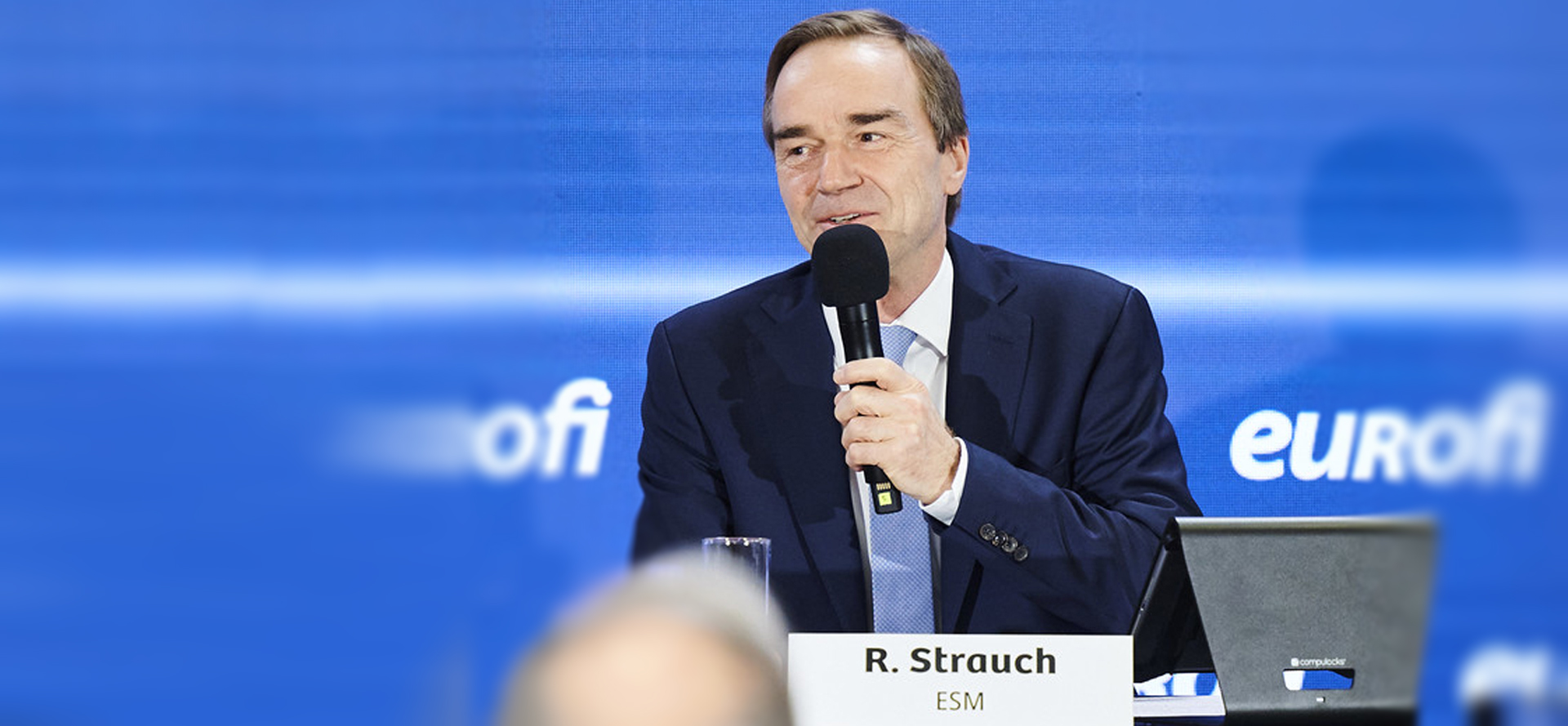Enhancing competitiveness in Europe: Old and new challenges

Rolf Strauch, ESM Chief Economist
“Enhancing Competitiveness in Europe: Old and new challenges”
Eurofi Magazine, February 2024
Eurofi Financial Forum, Ghent
Improving Europe’s competitiveness has been a long-standing challenge. Since 2010, the euro area’s economic growth underperformed its global competitors, particularly the US.1 One third of this difference in growth can be explained by less favourable demographics in Europe, but two-thirds is due to weaker productivity of labour and capital. The productivity gap between Europe and the US has been widening because of differences in technological progress, market efficiency and institutional framework. Europe’s underinvestment in innovation constraints technological progress, while market failures and excessive administrative burden keep the economy away from its full potential.
Prior to the pandemic, a favourable global environment masked Europe’s relative underperformance, but this will not be longer the case. Dynamic external demand and low import costs helped the euro area to keep its positions in global trade markets. However, after the pandemic and the energy crisis, the global situation has changed dramatically: increasing geopolitical fragmentation and uncertainty expose Europe’s dependence on external energy supplies and vulnerabilities to swings on global energy markets, which raise production costs and amplify the risk of resource misallocation. Additionally, the ageing of the population is another challenge. It can aggravate labour shortages, lead to higher wages, and divert financial resources from investment, further hindering competitiveness.
In the face of increased geopolitical uncertainty and mounting global challenges, Europe needs determined action to strengthen its resilience to external shocks and maintain its international standing. Remaining competitive in this context requires not only addressing long-lasting productivity challenges, but also building up resilience to external shocks. To achieve these goals, policy priorities should focus on:
First, accelerate structural reforms to ensure that resources move to sectors with more sustainable and higher growth potential. Reforms prioritising flexible labour markets foster a dynamic workforce. Educational reforms must align curricula with evolving industry needs, digitalisation and the greening of our economies. Innovation policies, including incentives for research and development, are crucial in cultivating a culture driving technological advancement. Businesses should be encouraged to embrace digital technologies.
Second, deeper economic and financial integration is imperative for a more robust and resilient Europe. Facilitating workers' movement across borders within Europe is crucial for labour market integration. This involves addressing barriers to labour mobility, recognising qualifications across countries, and fostering a more flexible labour market that allows skilled workers to contribute to the economies of different member states. Completing banking union and further progress towards a Capital Markets Union are also vital to avoid financial fragmentation, unlock funding and boost investment.
Third, green investment and trade policies play a pivotal role in boosting productivity and limiting Europe’s dependence on energy imports. Investments in renewable energy and energy efficiency strengthen Europe’s technological infrastructure while reducing its exposure to external shocks to energy supply. By reducing trade barriers, harmonising regulations, and creating an investor-friendly environment, Europe can attract greener, more productive investments to foster innovation.
Finally, advancing in Europe’s “open strategic autonomy” can also foster competitiveness to ensure a more resilient business environment. As a large open economy, Europe is more dependent on imports of energy and several strategic raw materials than the US and China, making it more vulnerable to geopolitically induced supply shocks. Progress towards an “open strategic autonomy” (reducing dependencies while remaining an open economy), can achieve more predictable input costs. This can help firms’ long-term planning, foster investments, and facilitate more efficient resource allocation.
In conclusion, addressing Europe’s competitiveness challenges is now more urgent than ever and requires a comprehensive approach. A comparison with the US underscores the importance of addressing technological factors and inefficiencies across various economic dimensions. Action is essential to rising geoeconomic challenges, higher energy costs, and demographic shifts. Structural reforms and deeper economic integration are vital in ensuring resilience and prosperity in the future.
1 In the last fifteen years, potential growth in the euro area has been on average 1 percentage point lower than in the US.
Contacts




